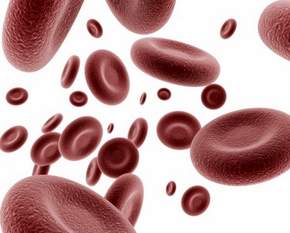
Danger: Anticoagulant Alert
Anticoagulant therapy has always been on the forefront of safety awareness education for nurses. Does your current practice reflect the latest standards in anticoagulant safety? If not, now is the time to update your skills.
Beginning in 2008, The Joint Commission (TJC) focused intensely on anticoagulant safety and created an additional medication safety item to the National Patient Safety Goals: “Reducing the likelihood of patient harm associated with the use of anticoagulation therapy” (TJC, 2013). The Institute for Healthcare Improvement has also targeted anticoagulants and other high alert medications in its drive to reduce adverse drug events (IHI, 2013).
Why is there such emphasis on anticoagulants? Perhaps because anticoagulant therapy is one of the most challenging drug therapies to manage. Not only are the dosing and monitoring requirements complex, but low patient compliance, poor labeling and unsafe clinical practices compound the problem.
In addition, anticoagulants interact with other medications, herbal supplements, over-the-counter products and some food types. Striking a balance between therapeutic anticoagulation and bleeding is an ongoing process requiring constant adjustments to therapy.
Nurses often land in the hot seat when anticoagulation therapy fails. However, there are steps you can take to ensure that your care reflects current standards of practice. To assist in this process, we have developed a mnemonic based on the word heparin, to remember the essential strategies needed to reduce anticoagulant errors and provide safe care:
| H | Hold orders | If more than one anticoagulant is ordered, if labs are abnormal or if there is compromised renal function. |
| E | Education | Ongoing continuing education on anticoagulant management is critical to safe practice |
| P | Protocols | Standardize documentation to avoid abbreviations, use standard weight-based heparin protocol for each infusion. Standardize IV heparin concentrations. |
| A | Assistance with Calculations | Always ask a colleague to independently double-check your drug calculation prior to administration, or check with the pharmacy if the dosage seems incorrect. |
| R | Reversal Agents | Know the standard protocol for reversal agents (Protamine is the reversal agent for heparin), and be prepared for the need to rapidly administer reversal agents if necessary. |
| I | IV Tips | Use smart pumps, bar coding and standard premixed solutions to improve IV safety. |
| N | Never Give Double | Never administer two anticoagulants concomitantly, such as Unfractionated heparin and Low Molecular Weight heparin. |
In addition, periodically reviewing The Joint Commission’s National Safety Goals will help you to maintain an excellent standard of care. TJC recommends that each patient receiving anticoagulation therapy is managed individually and the use of a programmable infusion pump is mandatory for the IV infusion of anticoagulants. A current INR (International Normalized Ratio) must be in the patient’s chart prior to anticoagulant administration, and specific facility protocols for anticoagulation therapy must be followed.
References:
Institute for Healthcare Improvement [IHI]. (2013). Retrieved from
The Joint Commission [TJC]. (2013). National Patient Safety Goals.




